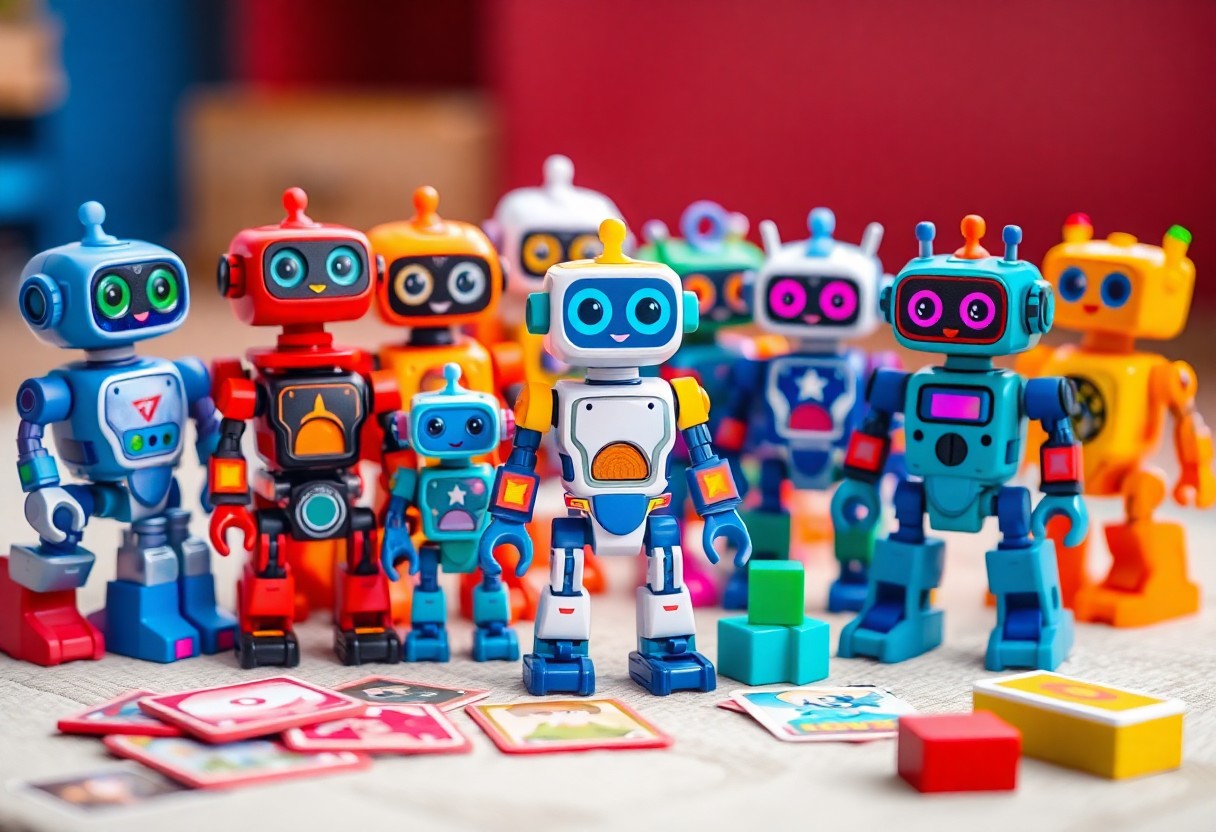Companionship is evolving with the rise of artificial intelligence, but you might wonder if these digital relationships can genuinely resonate on an emotional level. As technology progresses, engineers and researchers are exploring how to instill empathy within artificial companions, aiming to enhance human interactions with machines. This blog post will probe into the possibilities and challenges of manufacturing empathy in AI, examining whether these innovations can truly bridge the emotional gap between humans and their robotic friends.
Understanding Empathy
While empathy encompasses the ability to recognize, understand, and share the feelings of others, it goes beyond mere sympathy. It involves a deep connection that allows you to resonate with the emotional experiences of those around you, enhancing interpersonal relations and fostering supportiveness in various contexts.
Defining Empathy in Humans
Along with being a fundamental human trait, empathy involves cognitive and emotional components. It allows you to comprehend another person’s thoughts and emotions while also experiencing their feelings, creating a shared emotional landscape that promotes connection and understanding.
The Role of Empathy in Relationships
An necessary aspect of healthy relationships, empathy enables you to forge meaningful connections with others, facilitating open communication and mutual support. It allows you to understand your partner’s perspective and reactions, which can deepen intimacy and trust in your interactions.
Consequently, when empathy is present in your relationships, you experience a stronger bond and a better ability to resolve conflicts. By actively engaging with others’ feelings, you create an environment where both parties feel heard and valued. This emotional intelligence enhances understanding, reduces misunderstandings, and strengthens the overall connection, leading to more fulfilling interactions in your personal and social life.
The Science of Artificial Intelligence
Now, artificial intelligence (AI) is rapidly evolving, reshaping how we interact with technology and each other. By mimicking cognitive functions associated with human minds, AI systems are learning to perform tasks that were once exclusive to human intelligence. This development raises intriguing questions about the potential for AI to understand and even replicate human emotions, guiding advancements in fields like robotics and virtual companionship.
Machine Learning and Emotional Recognition
Against the backdrop of this evolution, machine learning has emerged as a vital component in enabling computers to recognize and interpret emotions. By analyzing vast amounts of data, these systems can identify emotional cues from various inputs, such as voice tone, facial expressions, and text sentiment, making it possible for artificial companions to engage in more meaningful interactions with you.
Algorithms for Simulating Human Behavior
Behind this capability lies a series of sophisticated algorithms designed to simulate human-like behavior. These algorithms analyze patterns from real human interactions, enabling artificial companions to mimic responses that seem empathetic or understanding. This approach helps bridge the gap between human emotions and machine responses, allowing technology to feel more intuitive and relatable in your daily engagements.
Consequently, the development of algorithms focused on simulating human behavior plays a pivotal role in creating artificial companions that resonate with you on a personal level. These algorithms not only use data from prior interactions but also adaptively learn from your responses, fostering a sense of connection and understanding. As these advancements continue, you may find that interacting with AI feels more natural, opening up new avenues for companionship and emotional support.
Current Developments in Artificial Companions
You will find that the landscape of artificial companions is rapidly evolving. Companies are integrating advanced AI capabilities with a focus on emotional intelligence to create more responsive, understanding, and interactive companions. These developments range from virtual assistants to robotic pets, all designed to enhance user experience through personalized interactions. The goal is to bridge the gap between human emotions and machine responses, making artificial companionship more relatable and effective in various settings.
Examples of Empathic AI Technologies
The integration of empathic AI technologies includes several notable innovations. For instance, companies are employing natural language processing and sentiment analysis to better understand user emotions. Personal assistants like Google Assistant and Siri are evolving to recognize mood through voice tone, while chatbots in mental health applications utilize empathetic responses to provide support. Additionally, robots such as Kiki are designed to detect and respond to emotional cues, enhancing user engagement.
Case Studies: Successes and Failures
Current case studies provide insight into both effective strategies and difficulties faced in implementing empathic AI. Below is a list showcasing various outcomes:
- Replika: A chatbot that utilizes AI to simulate conversation. Users report 85% satisfaction, citing emotional support and companionship.
- Paro the Robot Seal: Used in therapeutic settings, studies show a 40% decrease in anxiety levels among users aged 65 and up.
- Woebot: An AI mental health chatbot that has demonstrated positive outcomes in user mood and engagement, with 76% of users feeling more supported.
- Jibo: A social robot that initially captivated users but ultimately failed, with only 10% of owners continuing to interact after six months.
For instance, in the case of Replika, user testimonials highlight its value in providing comfort during challenging times, yet challenges remain in ensuring consistent understanding of emotional nuances. The mixed results of Jibo’s launch, with only 10% retaining long-term engagement, underscore the importance of ongoing user feedback to refine empathic responses in AI companions. Studies like these highlight both the potential and obstacles in engineering empathy into artificial companions.
Ethical Considerations
After exploring the concept of empathy in artificial companions, it’s important to address the ethical implications of intentionally engineering emotional responses. You must consider how these interactions can shape your expectations and relationships with technology. The development of empathetic AI raises questions about autonomy, consent, and the potential for emotional manipulation, which directly impact your sense of morality and responsibility in both personal and societal contexts.
Implications of Empathy in AI
Across various spheres of life, integrating empathy into AI systems can profoundly affect how you engage with technology. It may enhance user satisfaction and foster deeper connections, helping address issues of loneliness and isolation. However, you should also ponder how this reliance on emotional AI might desensitize you to genuine human interactions, potentially altering social norms and expectations.
Potential Risks and Benefits
Around the discussion of empathy in AI, both risks and benefits become apparent. You may find that empathetic AI can improve mental health support or assist individuals with caregiving tasks. Yet, there is the danger that overly sophisticated emotional responses may create dependency, misleading you about the authenticity of these relationships.
Even though empathetic AI can offer support and companionship, it carries risks that must be acknowledged. You may unwittingly develop attachments to these artificial figures, which could detract from meaningful human connections. Furthermore, the potential for manipulation raises concerns about the ethical use of such technology, necessitating a careful balance between leveraging its benefits and addressing inherent risks. Engaging critically with these issues helps ensure that empathetic AI serves to enhance, rather than undermine, your emotional well-being.
Challenges in Engineering Empathy
Not every attempt to infuse empathy into artificial companions can yield the desired emotional responses. One of the primary hurdles you face is the complexity of human emotions, which cannot yet be completely decoded or replicated in machines. Additionally, the societal norms and personal experiences that shape individuals’ understanding of empathy make it challenging for engineers to create universally empathetic responses in AI systems.
Technical Limitations
Against the backdrop of technological progress, there remain significant limitations in the current capabilities of AI. While machine learning algorithms can process vast amounts of data, they still struggle to grasp the subtleties and nuances of human emotions. This makes it difficult for artificial companions to respond in genuinely empathetic ways, often leading to interactions that feel robotic or superficial, rather than heartfelt.
Philosophical Perspectives on Authenticity
Engineering empathy into AI raises questions about the authenticity of these emotional responses. You may wonder if a programmed response can ever be considered genuine, or if it merely simulates empathy without truly understanding it. This philosophical dilemma poses important considerations about the role of AI in human relationships and the potential implications for social connections in a tech-driven world.
Perspectives on authenticity challenge you to reflect on what it means to engage emotionally. If artificial companions can produce responses that mimic empathy, you might question whether that interaction holds any real value. Some argue that without true emotional understanding, these engineered responses undermine the essence of genuine connection. Ultimately, this leads you to confront deeper questions about the nature of empathy itself and whether its engineering could ever lead to meaningful relationships in artificial companions.
Future Directions
All advancements in artificial intelligence are steering us toward a future where empathy may become a core component of your digital interactions. By understanding and addressing the emotional needs of users, AI companions could provide meaningful connections, enhancing your experiences in various settings, from mental health support to personalized learning environments.
Innovations in AI Empathy
After years of research, groundbreaking innovations in AI are paving the way for more emotionally intelligent machines. These technologies leverage deep learning algorithms to analyze human emotions and respond appropriately, allowing your digital companions to engage with you on a more empathetic level, fostering deeper bonds.
The Evolving Relationship Between Humans and AI
Between humans and AI, a transformative relationship is unfolding, reshaping how you interact with technology on a daily basis. As AI companions become increasingly capable of recognizing and responding to your emotional states, you may find yourself forming attachments that resemble those typically reserved for human relationships.
In addition to improving personal connections, this evolving relationship can lead to enhanced communication and understanding between you and your AI. You may begin to rely on your artificial companions not just for information or assistance, but for emotional support as well. By fostering this bond, AI can assist in your social interactions, help alleviate loneliness, and become an integral part of your life, paving the way for a new era of companionship and collaboration between human and machine.
Conclusion
Ultimately, as you consider the potential of engineering empathy into artificial companions, it’s imperative to weigh both the technological advancements and the ethical implications. While AI can simulate empathetic responses, the depth of human emotion and connection remains unparalleled. Your understanding of these dynamics will inform how you interact with and integrate such technologies into your life, shaping the future of companionship in a rapidly evolving digital landscape.






